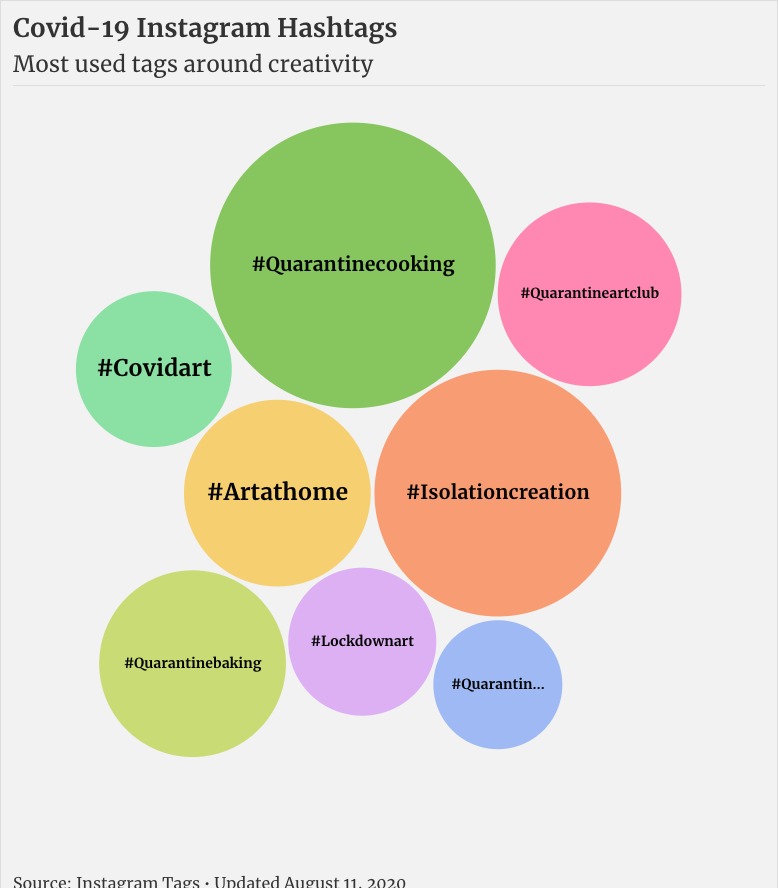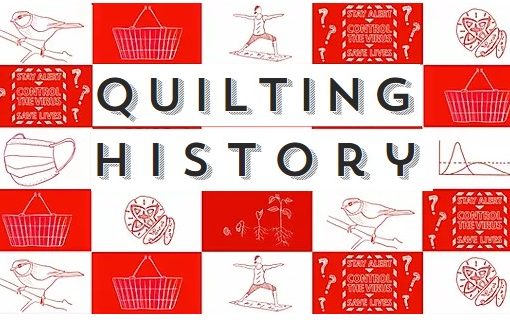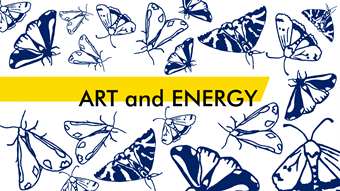By Jessica Liew
Like most people, creativity was a lifeline I clung onto very tightly in the pandemic. I never expected that creativity, in this context, would become the subject of my postgraduate thesis, and earned me a distinction in journalism.
My final practical project was due in August and the ongoing pandemic meant returning to the drawing board of ideas that needn’t rely on in-person journalistic activities. It became my creative exercise, so to speak.
Fortunately, I had to master a few layers of creativity to unlock in my project, starting with coding, webpage design, interviews, long-form journalism, data analysis and visualisations, and editing. The biggest challenge for me was the restriction on filming and photography — as a people-centric storyteller without these content, the story was only half-told.
I was spending more time browsing Instagram and Facebook out of desperation for connection and distractions. In the course of my scrolling escapades, I noticed a surge of creative activities and events popping up on my timeline. Celebrity chefs were hosting live cook-alongs, art studios were announcing Zoom art classes, knits and crochets were in, and sourdough art was trending. Although face-to-face art was cancelled, it was well and alive in the digital world and it was healing those in isolation.

That realisation was my a-ha! moment. I saw the connection between creativity and mental health, made possible by makers and creatives who pivoted in-person offerings to a digital setup. Covid-19 brought upon an art evolution that I wanted to document.
To verify these observations, I reached out to industry authorities for comments on how the pandemic mobilised art practitioners, their businesses, and mental healthcare. Victoria Hume, the director of The Culture, Health & Wellbeing Alliance, remarked that practitioners big and small were swiftly responding to their community’s needs, be it through art packs, working by phone or post, driven by the energy and imagination to make art accessible.
In a survey of artists between April-May 2020 that Hume shared, 87% of respondents felt that innovation (new ways of working) was in great need of improvement in the arts sector. Despite the technological setback, creatives dipped their feet into virtual platforms like Instagram and Zoom to build community and deliver engaging online experiences. Art has the power to heal lockdown loneliness, anxiety and depression: this drove practitioners of all sizes to embrace the digital space.
The UK’s largest Covid-19 study led by Prof Daisy Fancourt revealed that nine out of 10 adults were making art, and 22% or adults were doing more art than before. “The arts is something that could provide important mental health support here (during the pandemic),” she observed. Lockdown caused 20% of adults to rank their happiness levels at the lowest in March and April, compared to 8.36% in 2019, an ONS UK survey disclosed. To find out how society was coping, I poked around on Instagram and found the trending tags of #Quarantinecooking, #Isolationcreation, and #artathome.

The best part of my project was interviewing five creative practitioners who were instrumental to these social media movements. I set up Zoom video calls with London Drawing Group, When Still Waters Speak, Puff Bakery, Masterpeace and Beder. They each shared about finding their digital footing, creating digital projects, events and syllabuses, and growing communities “beyond zone one” (as Nicola Lamb of Puff Bakery described) to the farthest corners of the world. I took snippets of my Zoom recordings, stitched with screenshots from their social media and created mini documentaries for each story. I may not have spent a day getting to know them in person, but these limitations taught me to work with what I had.

Compassion and innovation of the creative industry has been instrumental to its revitalisation amidst the chaos. Art has open our minds and imaginations, making it one of the underrated caretakers that I’ve learned to value, in the course of my MA project.





